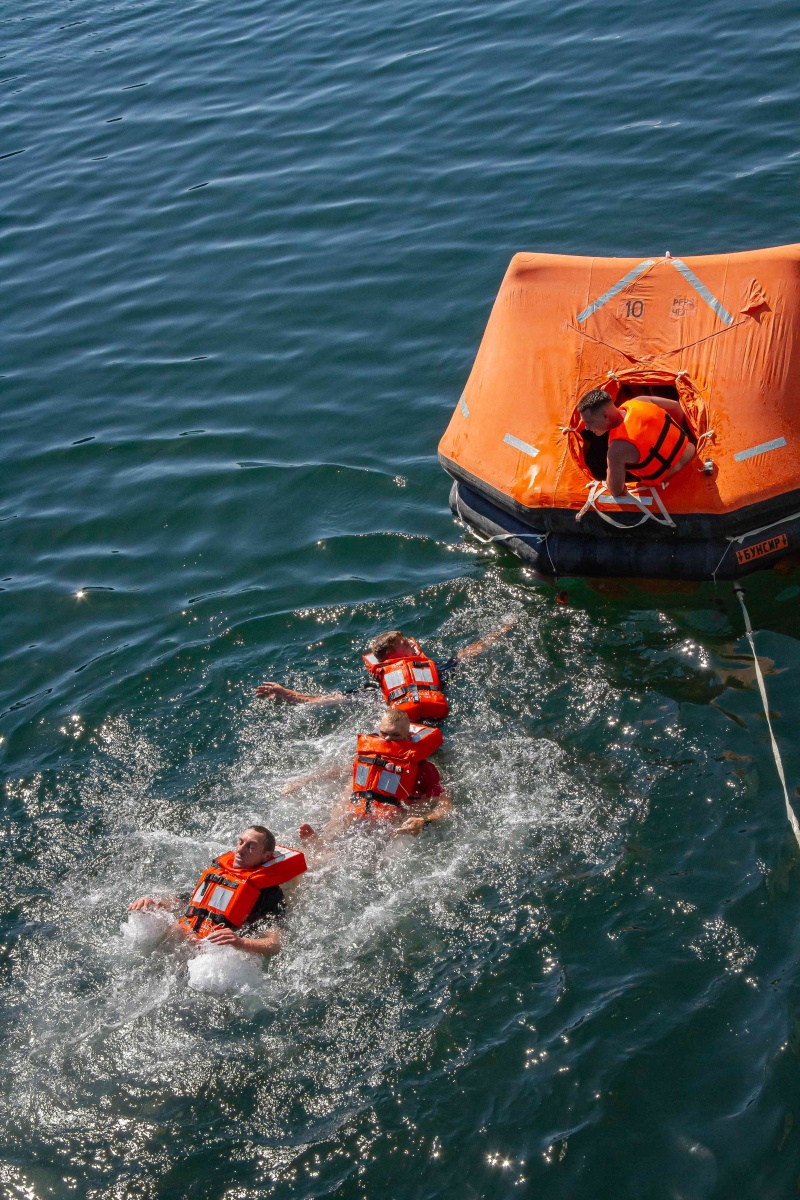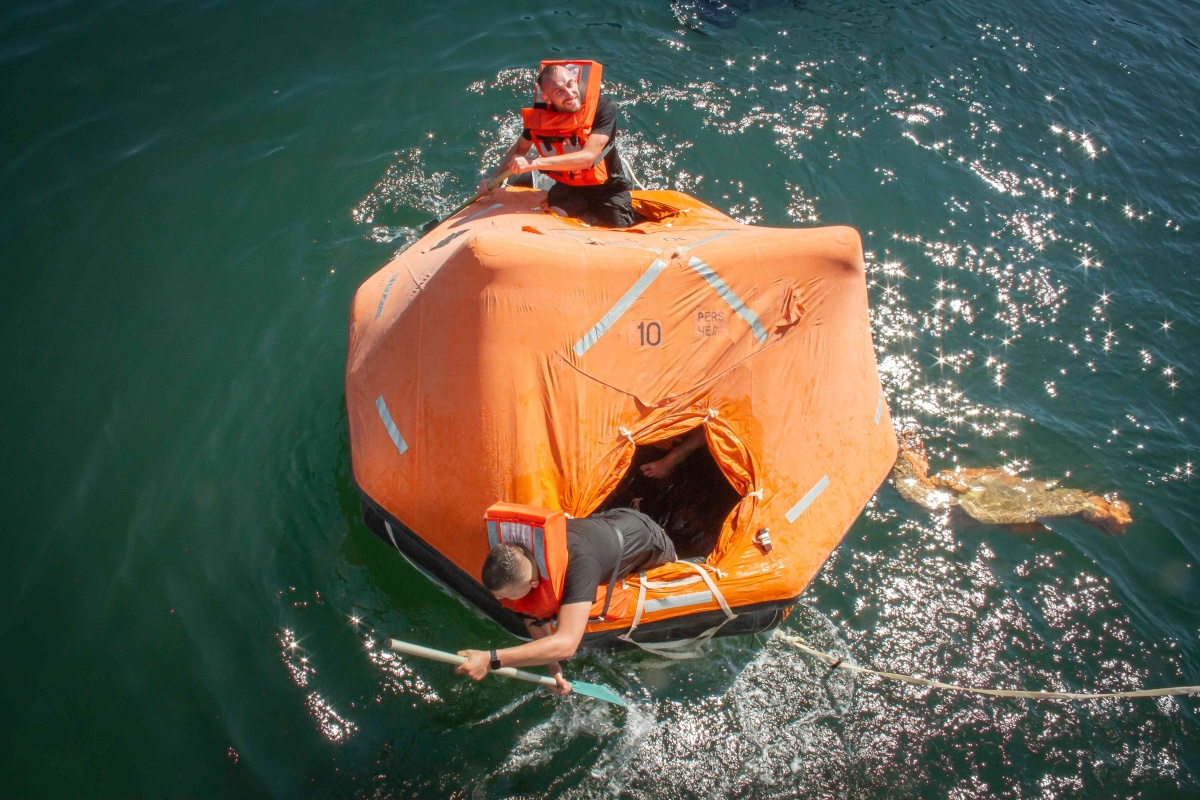Liferafts, the unsung heroes of maritime emergencies, are inflatable or rigid structures designed to provide emergency buoyancy, shelter, and life-saving aids. Crafted from durable materials like PU-coated neoprene or nylon, these resilient units endure the harsh conditions of the high seas, ensuring safety and survival.
Beacon of hope
In moments of crisis, survival becomes the utmost priority. Whether it's a shipwreck, a disaster at sea, or when a life is hanging in the balance, the presence of liferafts significantly increases the chances of salvation and a favorable outcome. These sturdy rafts serve as a reliable and stable platform, safeguarding lives amidst treacherous circumstances.
Imagine them as saving straws, warding off the terrible consequences that can arise from the unpredictable sea. Liferafts play a crucial role in buying valuable time for rescue operations. The high seas are notorious for their adverse weather conditions, with storms and extreme temperatures posing constant threats. Acting as protective barriers, liferafts shield passengers from hypothermia, sunburn, and dehydration, fortifying their chances of survival.
A liferaft's canopy provides essential shade and shelter from the relentless sun, harsh winds, and rain. Its vibrant colors serve a practical purpose, enhancing aerial visibility and improving the likelihood of being spotted by search and rescue teams or passing ships. These beacons of hope enable timely rescues, ensuring that lives are not lost to the vastness of the ocean.
But what lies beyond the raft itself? Delve deeper, and you'll discover the liferaft's arsenal of survival resources.

Emergency supply according to SOLAS
In order to avoid overwhelming you, dear readers, with a tedious list of all the contents within a liferaft, here is a link with detailed information: https://markogroup.com/en/info/documents/emergency-supply-of-liferafts-according-to-solas-/
In essence, liferafts are equipped with essential emergency provisions to meet basic needs during critical waiting periods. These include emergency food rations, emergency drinking water, and a first aid kit. To cater to various situations, additional equipment may comprise fishing sets, signal mirrors, blankets, and more.
Modern marine liferafts often feature communication and navigation equipment, such as radio transmitters, GPS devices, and distress beacons. These technological advancements greatly enhance the chances of successful rescue operations by enabling the transmission of distress signals.
Let us not overlook the significance of pyrotechnics and signaling devices like flares, whistles, and reflective materials. These tools prove invaluable in poor visibility conditions or during nighttime. They serve the purpose of attracting attention and relaying precise location information during search operations.
Furthermore, liferafts offer options for additional accessories that can play vital roles in situations involving injured or weakened individuals. These may include life jackets, harnesses, and lifelines. Such provisions ensure the utmost safety and support for all people in distress.

Historical Background
The origins of watercraft, bearing a vague resemblance to liferafts, can be traced back to ancient civilizations. In times of peril at sea, ancient Egyptians, Greeks, and Romans devised primitive watercraft using inflated animal skins to aid in their survival. The concept was born, setting the stage for the development of liferafts as we know them today.
The 19th century brought about notable changes in the design and construction of liferafts, primarily driven by the increasing importance of maritime communication. A significant turning point was marked by the prototype of the modern inflatable liferaft created by American inventor Horatio Carli. His invention earned a patent in 1903, propelling the active use of Carli rafts throughout the first half of the 20th century, particularly during both world wars. Inventions and innovations by various individuals during the 19th and early 20th centuries contributed to the improvement of liferaft designs, utilizing materials such as rubber, canvas, and wood.
The onset of World War II further accelerated the advancement of liferaft technology, driven by the heightened demand for life-saving equipment in naval operations. As the post-World War II era dawned, significant progress in materials and technology revolutionized the design and functionality of liferafts. Special attention was paid to ensuring optimal protection from external conditions within the raft itself. Awning-like structures resembling tents were introduced to shield occupants from wind, rain, and the scorching sun.
Today's liferafts boast inflatable structures made from durable materials like neoprene or polyurethane-coated nylon, enhancing their resilience and reliability. These modern marvels incorporate automatic inflation mechanisms, hydrostatic release devices, and self-righting capabilities, simplifying their deployment and ensuring increased dependability

Regulations and Standards
Throughout the course of history, various organizations, including the International Maritime Organization (IMO), have played a vital role in establishing stringent safety regulations and standards for liferaft design, testing, and deployment. These standards guarantee that liferafts meet specific criteria regarding capacity, equipment, buoyancy, and stability, thus maximizing the chances of survival for individuals in distress.
For further information on the resolutions pertaining to liferafts, please follow the link.
______________________________________________________________________________________
As we reflect on the evolution of liferafts, it becomes evident that they are not merely life-saving devices but products of continuous innovation and a testament to the collective efforts to enhance safety at sea. From ancient beginnings to modern innovations, liferafts stand as a testament to human ingenuity and our unwavering commitment to protecting lives on the unpredictable seas. But perfection knows no limits and there is a lot of work to be done in future!






